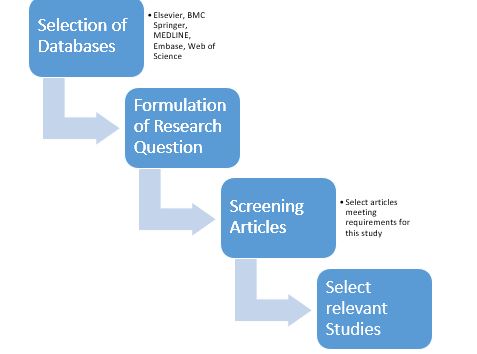Advancing Plant Health Management: Challenges, Strategies, and Implications for Global Agriculture
Keywords:
Plant health management, Emerging plant pathogens, Integrated disease management, Ecological approaches, Crop yield Pest resistance, Climate change impacts Sustainable agricultureAbstract
This review paper explores the intricate dynamics surrounding plant health management in the context of global agricultural sustainability and food security challenges. Beginning with an overview of the United Nations' designation of 2020 as the International Year of Plant Health and the projected increase in food demand by 2050, the paper delves into the critical role of cereals in African diets, emphasizing their nutritional significance and cultural importance. A historical perspective on plant disease management sets the stage for discussing modern approaches like integrated pest management and ecological strategies, emphasizing the need for interdisciplinary collaboration. The methodology section outlines a systematic review process, including database selection, formulation of review questions, and screening criteria for relevant studies. The paper then delves into specific plant pathogens affecting key crops like potatoes, grapes, bananas, and wheat, highlighting the economic and social impacts of diseases such as late blight, grey mold, banana Xanthomonas wilt, and wheat stem rust. The emergence of pesticide-resistant populations and novel pathogens adds complexity to disease management strategies, necessitating innovative solutions such as genetic engineering and ecological control measures. Key findings underscore the urgency of addressing emerging diseases and their socio-economic ramifications, particularly in vulnerable regions. The paper advocates for sustainable disease control practices, including early diagnosis techniques using next-generation sequencing, strict quarantine measures, and integrated pest management approaches. It also stresses the importance of socio-economic analyses in disease control programs and the integration of ecological perspectives for effective agricultural sustainability.
References
M. Sezonlin et al., “Phylogeography and population genetics of the maize stalk borer Busseola fusca (Lepidoptera, Noctuidae) in sub-Saharan Africa,” Mol Ecol, vol. 15, no. 2, pp. 407–420, Feb. 2006, doi: 10.1111/j.1365-294x.2005.02761.x.
J. Benjamin et al., “Cereal production in Africa: the threat of certain pests and weeds in a changing climate—a review,” Agric. Food Secur. 2024 131, vol. 13, no. 1, pp. 1–16, Apr. 2024, doi: 10.1186/S40066-024-00470-8.
M. K. Dhillon and D. P. Chaudhary, “Biochemical interactions for antibiosis mechanism of resistance to Chilo partellus (Swinhoe) in different maize types,” Arthropod-Plant Interact, vol. 9, no. 4, pp. 373–382, Aug. 2015, doi: 10.1007/s11829-015-9374-z.
P. A. Calatayud, B. P. Le Ru, J. van den Berg, and F. Schulthess, “Ecology of the African maize stalk borer, Busseola fusca (Lepidoptera: Noctuidae) with special reference to insect–plant interactions,” Insects, vol. 5, no. 3, pp. 539–563, 2014, doi: 10.3390/insects5030539.
R. Day et al., “Fall armyworm: impacts and implications for Africa,” Outlooks Pest Manag, vol. 28, no. 5, pp. 196–201, Oct. 2017, doi: 10.1564/v28_oct_02.
M. Snyman, A. K. Gupta, C. C. Bezuidenhout, S. Claassens, and J. van den Berg, “Gut microbiota of Busseola fusca (Lepidoptera: Noctuidae),” World J Microbiol Biotechnol, vol. 32, no. 7, p. 115, Jul. 2016, doi: 10.1007/s11274-016-2066-8.
R. Kfir, W. A. Overholt, Z. R. Khan, and A. Polaszek, “Biology and management of economically important lepidopteran cereal stem borers in Africa,” Annu Rev Entomol, vol. 47, no. 1, pp. 701–731, 2002, doi: 10.1146/annurev.ento.47.091201.145254.
ákos Mesterházy, J. Oláh, and J. Popp, “Losses in the Grain Supply Chain: Causes and Solutions,” Sustain. 2020, Vol. 12, Page 2342, vol. 12, no. 6, p. 2342, Mar. 2020, doi: 10.3390/SU12062342.
T. Tufail et al., “Wheat straw: a natural remedy against different maladies,” Food Sci Nutr, vol. 9, no. 4, pp. 2335–2344, Apr. 2021, doi: 10.1002/fsn3.2030.
A. Dabija, M. E. Ciocan, A. Chetrariu, and G. G. Codină, “Maize and sorghum as raw materials for brewing, a review,” Appl Sci, vol. 11, no. 7, p. 3139, Apr. 2021, doi: 10.3390/app11073139.
C. Mbosso et al., “Fonio and Bambara groundnut value chains in Mali: issues, needs, and opportunities for their sustainable promotion,” Sustainability, vol. 12, no. 11, p. 4766, Jun. 2020, doi: 10.3390/su12114766.
S. Sharma, R. Kooner, and R. Arora, “Insect pests and crop losses,” Breed. Insect Resist. Crop. Sustain. Agric., pp. 45–66, Oct. 2017, doi: 10.1007/978-981-10-6056-4_2.
S. Fahad et al., “Bio-based integrated pest management in rice: An agro-ecosystems friendly approach for agricultural sustainability,” J. Saudi Soc. Agric. Sci., vol. 20, no. 2, pp. 94–102, Feb. 2021, doi: 10.1016/J.JSSAS.2020.12.004.
V. Pallas and J. A. García, “How do plant viruses induce disease? Interactions and interference with host components,” J Gen Virol, vol. 92, no. 12, pp. 2691–2705, Dec. 2011, doi: 10.1099/vir.0.034603-0.
Y. J. H. Galani, C. Orfila, and Y. Y. Gong, “A review of micronutrient deficiencies and analysis of maize contribution to nutrient requirements of women and children in Eastern and Southern Africa,” Crit Rev Food Sci Nutr, vol. 62, no. 6, pp. 1568–1591, 2022, doi: 10.1080/10408398.2020.1844636.
O. Ekpa, N. Palacios-Rojas, G. Kruseman, V. Fogliano, and A. R. Linnemann, “Sub-Saharan African maize-based foods—processing practices, challenges and opportunities,” Food Rev Int, vol. 35, no. 7, pp. 609–639, Oct. 2019, doi: 10.1080/87559129.2019.1588290.
M. Ronald, M. Charles, M. Stanford, and M. Eddie, “Predictions of the Striga scourge under new climate in southern Africa: a perspective,” J Biol Sci, vol. 17, no. 5, pp. 194–201, 2017, doi: 10.3923/jbs.2017.194.201.
Z. M. Hassan, N. A. Sebola, and M. Mabelebele, “The nutritional use of millet grain for food and feed: a review,” Agric Food Secur, vol. 10, no. 1, p. 16, Dec. 2021, doi: 10.1186/s40066-020-00282-6.
K. Ramesh, A. Matloob, F. Aslam, S. K. Florentine, and B. S. Chauhan, “Weeds in a changing climate: Vulnerabilities, consequences, and implications for future weed management,” Front. Plant Sci., vol. 8, p. 95, Feb. 2017, doi: 10.3389/FPLS.2017.00095/BIBTEX.
D. Ouattara, S. Nacro, K. Latévi, A. Coulibaly, and I. Somda, “Ecology of the African rice gall midge, Orseolia oryzivora (Diptera: Cecidomyiidae) in Western Burkina Faso, West Africa,” Adv Entomol, vol. 08, no. 01, pp. 1–14, 2020, doi: 10.4236/ae.2020.81001.
A. Galati, F. A. Oguntoyinbo, G. Moschetti, M. Crescimanno, and L. Settanni, “The cereal market and the role of fermentation in cereal-based food production in Africa,” Food Rev Int, vol. 30, no. 4, pp. 317–337, 2014, doi: 10.1080/87559129.2014.929143.
A. F. Lum, D. Chikoye, and S. O. Adesiyan, “Control of Imperata cylindrica (L.) Raeuschel (speargrass) with nicosulfuron and its effects on the growth, grain yield and food components of maize,” Crop Prot, vol. 24, no. 1, pp. 41–47, Jan. 2005, doi: 10.1016/j.cropro.2004.06.006.
L. H. Swanepoel et al., “A systematic review of rodent pest research in Afro-Malagasy small-holder farming systems: are we asking the right questions?,” PLoS One, vol. 12, no. 3, Mar. 2017, doi: 10.1371/journal.pone.0174554.
E. O. Ogah, J. A. Odebiyi, F. K. Ewete, A. A. Omoloye, and F. E. Nwilene, “Biology of the African rice gall midge Orseolia oryzivora (Diptera: Cecidomyiidae) and its incidence on wet-season rice in Nigeria,” Int J Trop Insect Sci, vol. 30, no. 01, p. 32, Mar. 2010, doi: 10.1017/s1742758410000044.
V. Sardana, G. Mahajan, K. Jabran, and B. S. Chauhan, “Role of competition in managing weeds: an introduction to the special issue,” Crop Prot, vol. 95, pp. 1–7, May 2017, doi: 10.1016/j.cropro.2016.09.011.
P. A. J. van Oort, F. Gou, T. J. Stomph, and W. van der Werf, “Effects of strip width on yields in relay-strip intercropping: a simulation study,” Eur J Agron, vol. 112, Jan. 2020, doi: 10.1016/j.eja.2019.125936.
F. E. Nwilene, K. F. Nwanze, and A. Youdeowei, “Impact of integrated pest management on food and horticultural crops in Africa,” Entomol Exp Appl, vol. 128, no. 3, pp. 355–363, Sep. 2008, doi: 10.1111/j.1570-7458.2008.00744.x.
H. De Groote et al., “The potential of a herbicide resistant maize technology for Striga control in Africa,” Agric Syst, vol. 97, no. 1–2, pp. 83–94, Apr. 2008, doi: 10.1016/j.agsy.2007.12.003.
S. Skendžić, M. Zovko, I. P. Živković, V. Lešić, and D. Lemić, “The impact of climate change on agricultural insect pests,” Insects, vol. 12, no. 5, p. 440, May 2021, doi: 10.3390/insects12050440.
K. S. Poutanen et al., “Grains—a major source of sustainable protein for health,” Nutr Rev, vol. 80, no. 6, pp. 1648–1663, Jun. 2022, doi: 10.1093/nutrit/nuab084.
F. Shah and W. Wu, “Soil and Crop Management Strategies to Ensure Higher Crop Productivity within Sustainable Environments,” Sustainability, vol. 11, no. 5, p. 1485, Mar. 2019, doi: 10.3390/SU11051485.




